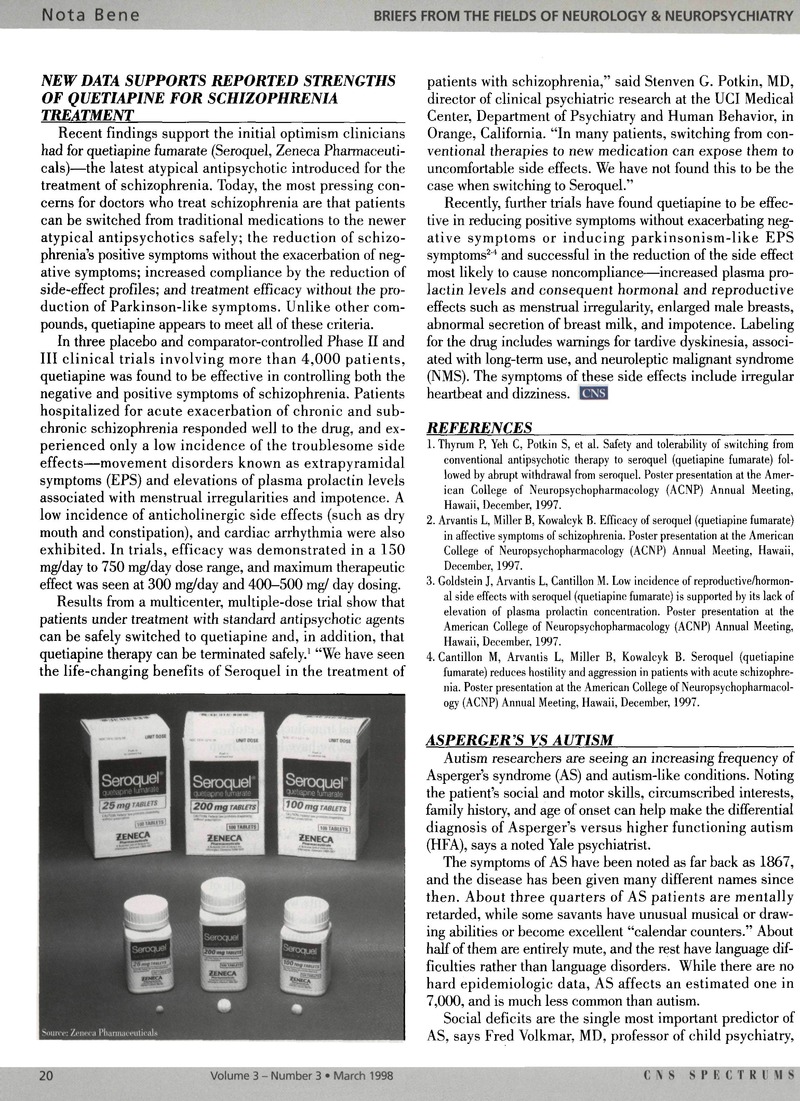3.Goldstein, J,
Arvantis, L,
Cantillon, M. Low incidence of reproductive/hormonal side effects with seroquel (quetiapine fumarate) is supported by its lack of elevation of plasma prolactin concentration. Poster presentation at the American College of Neuropsychopharmacology (ACNP) Annual Meeting, Hawaii, December,
1997.
Google Scholar 